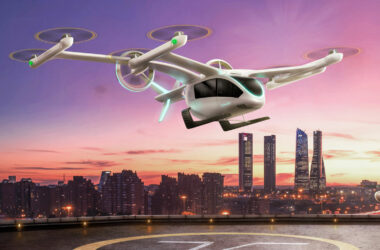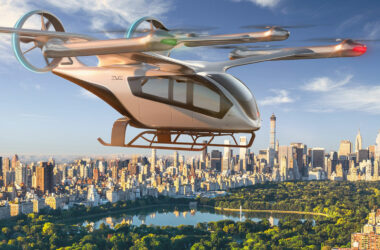Embraer unveils two images of the eVTOL prototype from its subsidiary Eve Air Mobility being assembled at the manufacturer’s facilities.
The electric aircraft, also called “flying taxi” or “flying car” by the non-specialist press, appears in different stages of assembly.
In the first image, the eVTOL (acronym for electric vertical takeoff and landing) is seen from above, with wings and horizontal stabilizers mounted, as well as much of the fuselage and tail.
Follow Air Data News: WhatsApp | Google News | Instagram | LinkedIn | Twitter | Facebook

The booms where the rotors will be located are also installed, as are the electric motor boxes.
The propellers cannot yet be seen in the tail and the fairing has not yet been installed in the front.
The second image shows the aerial vehicle at a more advanced stage, with various equipment installed inside the fuselage, in addition to cables and wiring.

Remotely piloted
The detail that draws the most attention is the opaque front fairing, suggesting that the first eVTOL prototype will be operated remotely.
It is a strategy already used by other manufacturers of electric urban mobility aircraft. Later, Eve should produce other test units with the cockpit actually installed.
In both images it is possible to see an E-Jet in the background, indicating that the assembly takes place in an Embraer hangar, possibly at the São José dos Campos facilities.

Eve’s assembly line will be located in facilities in a city close to Embraer’s headquarters, in Brazil.
Until now, the company had only flown a concept plane on a smaller scale and focused on developing the project and the entire supply chain, in addition to enabling the infrastructure for eVTOL operation, an essential step for the technology to succeed.
According to Eve, the first prototype should fly in 2024 and enter service in 2026.






